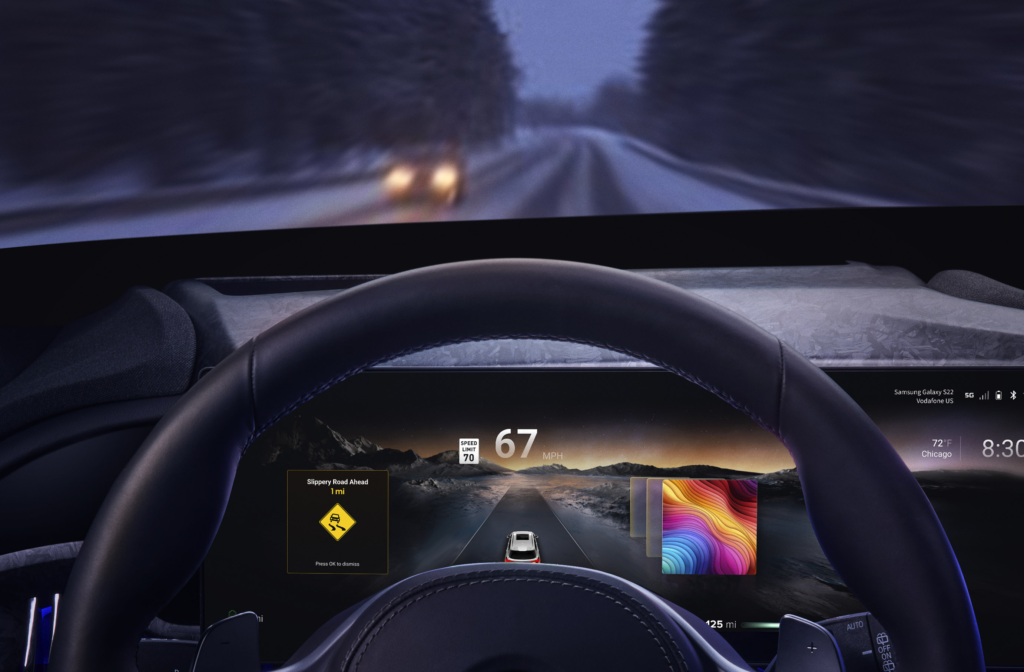Software-defined vehicles (SDVs) are modern cars that rely heavily on software to control and improve their functions. Instead of using traditional mechanical components for all tasks, SDVs use software updates to manage performance, safety features, entertainment systems, and more. These vehicles offer a flexible and customizable driving experience, similar to how smartphones operate.

In simple terms, SDVs are like smart cars that can be upgraded with new features even after purchase—without needing a trip to the dealership.
Why SDVs Are Becoming So Popular
There are several reasons why SDVs are seeing high demand in the global auto market:
- Better Control and Safety: With real-time data, software updates can improve safety systems like brakes, steering, and collision alerts.
- More Personalization: Drivers can enjoy a more tailored experience. Think custom driving modes, personalized infotainment settings, and even voice commands.
- Over-the-Air (OTA) Updates: Like your smartphone gets updates, SDVs receive regular software patches that fix bugs and introduce new features without visiting a garage.
- Lower Maintenance Costs: Software can diagnose problems early and prevent expensive repairs.
Huge Market Growth Expected by 2025
According to industry analysts, the global market for SDVs is expected to reach 7.6 million units by 2025. This is a massive leap in growth, especially considering the current market size. The trend is largely driven by:
- Growing demand for electric vehicles (EVs)
- Increased use of AI and cloud-based systems
- Focus on user experience and digital integration
To understand how fast this sector is growing, McKinsey & Company published a report noting that automotive software and electronics could make up 30% of vehicle costs by 2030, up from just 10% today.
North America Takes the Lead
North America is currently leading the SDV market with a 43% market share. The region’s success can be linked to its large base of technology companies and early adopters. Companies like Tesla, Rivian, and Lucid Motors are examples of automakers that focus strongly on software-driven features.

In addition, traditional car manufacturers such as Ford and General Motors are making big investments to keep up with the trend. Ford’s new EV platform, for instance, allows for cloud-based connectivity and frequent software updates.
This strong ecosystem of automotive OEMs (Original Equipment Manufacturers) and tech developers gives North America a major competitive advantage.
Role of Battery Electric Vehicles (BEVs)
The rise of Battery Electric Vehicles (BEVs) is tightly connected to the growth of SDVs. BEVs, which run only on electric power, are simpler in structure and easier to integrate with advanced software. Unlike conventional gas-powered vehicles, BEVs can be more easily upgraded and adjusted via software.
New-age OEMs are therefore focusing on BEV platforms that support software-defined functions from the beginning. This approach makes it easier to add new apps, monitor performance, and even run diagnostics through a smartphone app.
To learn more about the rise of BEVs and how they’re impacting car design, check out this Deloitte automotive study.
How Software Is Reshaping the Auto Industry
Here are some of the ways software is transforming vehicles:
- Infotainment Systems: SDVs come with large touchscreens that act like tablets, offering navigation, entertainment, and app connectivity.
- Driver Assistance Systems (ADAS): Features like lane-keeping assist, adaptive cruise control, and parking aids rely on real-time data and software analysis.
- Vehicle-to-Everything (V2X) Communication: SDVs are being designed to talk to other cars, traffic lights, and even road infrastructure to reduce accidents and traffic jams.
- Subscription Services: Some automakers now charge monthly fees for extra features like heated seats, self-driving modes, or enhanced audio systems.
Big Tech Companies Are Also Getting Involved
It’s not just carmakers driving the SDV revolution. Big tech companies like Apple, Google, and Amazon are entering the automotive space:
- Apple is reportedly working on its own car project (Project Titan).
- Google’s Android Automotive OS is already in vehicles from Volvo, Polestar, and General Motors.
- Amazon Web Services (AWS) is providing cloud infrastructure for vehicle connectivity and machine learning.
This intersection of automotive and digital technology is setting the stage for a new era of mobility, where vehicles will be as smart and connected as any other device.
Challenges Ahead
Despite the high demand, there are still some challenges for the SDV market:
- Cybersecurity Risks: More software means more vulnerabilities. Hackers could target SDVs if security isn’t strong.
- Standardization: There is no global standard yet for SDV platforms. That makes it difficult for developers and buyers to keep up.
- High Initial Costs: Developing the hardware-software combo is expensive, which can make SDVs more costly for buyers.
- Data Privacy Concerns: With vehicles tracking user behavior, location, and habits, questions about how this data is stored and used are still being debated.
The Road Ahead
Even with these hurdles, the future of SDVs looks very promising. Car manufacturers and tech firms are investing billions into research and development to stay ahead in this competitive landscape. The growing need for personalized, safe, and connected driving experiences will only accelerate this trend.
With an estimated 7.6 million SDVs hitting the road by 2025, drivers should expect a revolution not just in transportation but in how we interact with vehicles altogether.
To explore how automakers are adapting to this digital shift, visit Forbes’ coverage on automotive transformation.
If you want to stay ahead in this fast-changing world, keep an eye on SDVs—they might just be your next upgrade on wheels.
Also Read – Meet the Sleek New 2025 Honda Civic Hatchback Hybrid






